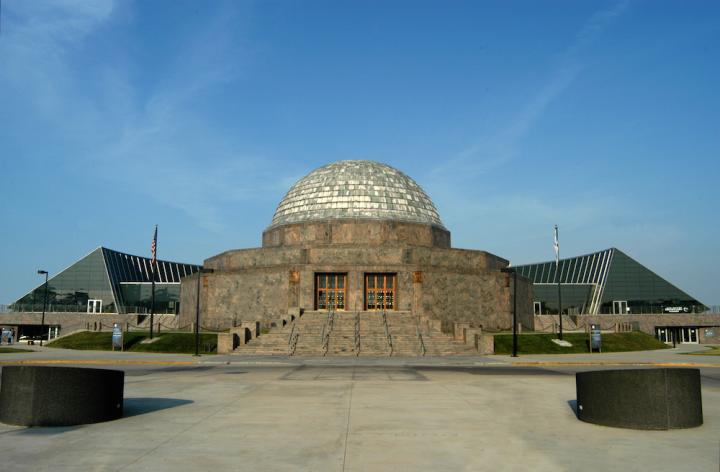The Historic Sites initiative recognizes landmarks significant to physics history across the United States.

Credit: Adler Planetarium
COLLEGE PARK, MD, October 11, 2019 — The American Physical Society (APS) is pleased to recognize the Mount Wilson Observatory in Los Angeles, California and the Adler Planetarium in Chicago, Illinois as the 2019 APS Historic Sites awardees for their long-standing traditions of discovery and innovation in physics. Each site will receive a plaque that acknowledges its exemplary contributions to the scientific enterprise.
The APS Historic Sites initiative works to increase public awareness of noteworthy physics-related events and discoveries. Each year, APS chooses a select number of sites of member-nominated sites to be formally recognized.
Mount Wilson Observatory (Los Angeles, California)
At this site, the innovative 100-inch telescope, realized by George Ellery Hale in 1917, empowered astronomers to discover aspects and mysteries of our Cosmos. Edwin Hubble ascertained the distance to Andromeda, proving the existence of galaxies beyond ours. Hubble and Milton Humason amassed evidence that the universe is expanding. Walter Baade identified distinct stellar populations from which to obtain better estimates of the size and age of the universe.
On Saturday, October 19, there will be a plaque dedication event at the observatory. The event is open to the public, contact Lynn Tejada ([email protected]) for more information.
Adler Planetarium (Chicago, Illinois)
Since its opening in 1930, the Adler Planetarium has contributed immeasurably to the dissemination of exciting discoveries in astronomy and astrophysics. It is the oldest public planetarium in the Western Hemisphere. The museum houses one of the greatest collections of historic astronomical instruments in the world, spanning nine centuries of human efforts to understand the universe. Millions of visitors have enjoyed vivid sky shows, presentations on space science and interplanetary exploration, hands-on activities and inspiring educational programs.
Learn more by visiting go.aps.org/historic-sites or contacting [email protected].
###
About APS
The American Physical Society (aps.org) is a nonprofit membership organization working to advance and diffuse the knowledge of physics through its outstanding research journals, scientific meetings, and education, outreach, advocacy, and international activities. APS represents over 55,000 members, including physicists in academia, national laboratories, and industry in the United States and throughout the world. Society offices are located in College Park, Maryland (Headquarters), Ridge, New York, and Washington, DC.
Media Contact
Sara Conners
[email protected]




